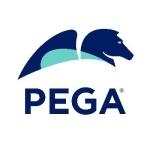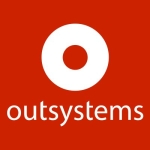What is our primary use case?
We primarily use the solution for tickets and we use it for order processing.
We use the product for incident management, asset management, and service management. Those are the three big use cases. It's mostly asset management.
What is most valuable?
We use a ton of the features.
The best feature for me, personally, is Discovery. That one is super useful for us. Discovery is super advantageous. That has brought us a long way forward. That is a big deal for us. It's gotten us away from the manual of walking the floor to trying to find the assets.
The other one that is really big for us is Automatic Workflows. That is a big deal and certainly helps with the streamlining of the process and the interconnectivity with incident management.
The solution is very stable.
The company went out of their way to help us and even helped us save about six months of deployment time.
If you stick to the out-of-the-box solution, it's an easy setup.
You can scale the solution quite well.
Technical support is very helpful and very responsive.
What needs improvement?
The licensing needs to be divided into tiers in order to attract lower-level users.
Right now, the licensing is kind of an all or nothing and so what happens is, is that either somebody has full access or they don't have any access due to the way the licensing works. There is this kind of view for ITIL purposes access that we kind of need, and we don't have access to it. If you think of RACI, it's informed access. You would need a full license to be able to do it. And we just don't. It really caused us a level of visibility loss.
Basically, what the licensing offers now is just for doers. There's no viewer role. It really needs a viewer role or an approver role level of licensing without a doer role license having to be issued.
If you move away from the out-of-the-box configurations, the initial implementation can get complex and take a while.
For how long have I used the solution?
I've been using the solution for about two years at this point.
What do I think about the stability of the solution?
I love the stability. We were lucky enough to be physically located very close to Service Now. When we were hitting problems with our internal organization to roadblocks, we literally drove up to Service Now headquarters and sat down with them for an eight-hour session to revamp our whole internal process. I was pretty sure that if we would have continued down our own process, we would have taken another six months. However, with Service Now's assistance, we fixed it in one day just by having access directly to Service Now. That was an amazing process. They enabled us to jump forward six months and made things super stable.
What do I think about the scalability of the solution?
We're a huge company. Scalability is definitely possible. We're scaling to over 100,000 users. We have asset management users, incident managements, software deployment, hardware deployments, break fixes, asset monitoring, et cetera, all on this solution.
We do plan to increase usage in the future.
If a company needs to scale, it can do so, no problem.
How are customer service and technical support?
Technical support has been great. They are extremely helpful and responsive. We're quite satisfied with the level of service we receive as an organization.
Which solution did I use previously and why did I switch?
We did previously use different solutions. Everything was fragmented. We were able to combine multiple systems. We tied multiple systems to combine them into one ServiceNow offering. We wanted to consolidate 50 or more systems into a single system and Service Now is one of the two options we looked at that was able to do that.
How was the initial setup?
The deployment process is basically about requiring, gathering, and then developing or customizing the product itself for the workflows and then deploying it out into the field. It's really pretty simple, as long as you stick to a lot of the out-of-box functionality.
When you start to get away from the out-of-box functionality, you can really link in the deployment process. Anything that you go out past that out-of-box functionality, you can really hurt yourself. Basically, it has the capability of getting very complicated. However, if you stick to out-of-the-box, it's simple. We personally found that out the hard way.
For us, the deployment process took two years.
What about the implementation team?
We recruited some outside help to assist us in the implementation. We found that having experts on hand was extremely beneficial.
I'd recommend outside help. There are definitely some nuances within the deployment that having some experts within Service Now is very helpful - especially when you're first time to have some outside thinking.
What was our ROI?
Our organization has noticed an ROI. They're happy with it.
What's my experience with pricing, setup cost, and licensing?
The licensing needs to offer a variety of levels to meet what an organization actually needs. Right now, it's all or nothing, and that can get costly.
Which other solutions did I evaluate?
We also evaluated SAP against ServiceNow. We ended up choosing ServiceNow in the end, however, I can't recall what the deciding factor or factors were.
What other advice do I have?
I'm a customer and end-user.
We are using the FAAS version of the solution currently.
I would advised those companies considering the solution to take advantage of what the programs do rather rather than try to lift and shift.
I'd rate the solution at a nine out of ten overall.
Disclosure: My company does not have a business relationship with this vendor other than being a customer.


















